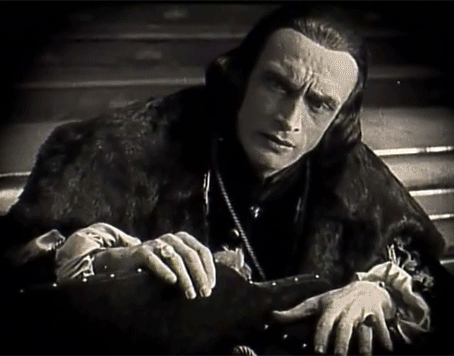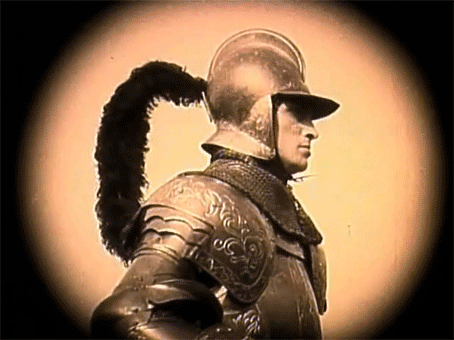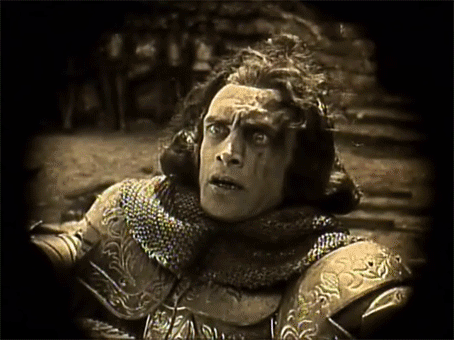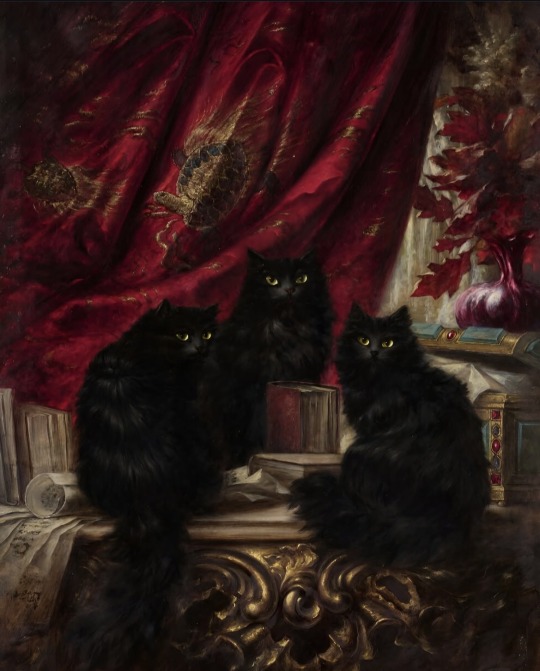Text
And you're the galantine Cold and alone, it suits you well Won't find me perching here again
May your feet serve you well And the rest be sent to hell Where they always have belonged Cold hearts brew colder songs

29 notes
·
View notes
Text
ME AND WHO
24 notes
·
View notes
Text





Picking up a pencil for the first time in over two months and this is what if feels like
101 notes
·
View notes
Text
Mongolian horse archer; pulled from Instagram from a repost account that did not include the og source
2K notes
·
View notes
Text

how are you gonna be catholic, british AND bisexual... pick a struggle
975 notes
·
View notes
Text
Jugement Dernier — La Barque de Charon
This drawing is a parody of Michelangelo's Barge of Charon painting in the Sistine Chapel. Here, the artist has replaced the figures in Michelangelo's painting with key figures in Napoleon's government.
https://commons.wikimedia.org/wiki/File:Jugement_Dernier_(NAPOLEON_101).jpg

The most amusing napoleonic caricature I've ever seen.
12 notes
·
View notes
Text

joab kills amasa
And Joab said to Amasa, “Is it well with you, my brother?” And Joab took Amasa by the beard with his right hand to kiss him. But Amasa did not observe the sword that was in Joab's hand. So Joab struck him with it in the stomach and spilled his entrails to the ground [...] — 2 Samuel 20:8-10 (ESV)
miniature from a speculum humanae salvationis manuscript. [place of origin unknown], c. 1427
source: Sarnen, Benediktinerkollegium, Cod. membr. 8, fol. 18v
153 notes
·
View notes
Text
Personality Traits of Gracchus Babeuf part II

As usual, I am not infallible, so please feel free to criticize me. Additionally, my text is not very fluid because I’ve been very exhausted these days, but I couldn’t risk losing it due to issues with my computer.
In the first part, we saw here https://www.tumblr.com/nesiacha/775869258936860672/physical-appearance-of-gracchus-babeuf?source=share what Gracchus Babeuf looked like. Here, we will discuss his personality. In this part we will see Babeuf's positive personality traits then in a third part his faults (thanks to the word limit on Tumblr)
Gracchus Babeuf was known to be a very sensitive person, as confirmed by his friend Buonarroti. His gaze also revealed his frankness.
As a fervent revolutionary, he was strongly opposed to some of the massacres during the Revolution, such as the drownings ordered by Carrier and the assassination of Foulon during the storming of the Bastille. You can see more on this topic in the links here: Gracchus Babeuf’s Opinion on the Storming of the Bastille and Message to de Villiers and Sécher-Chaunu, which also demonstrate that Babeuf was fully committed to republican ideals. These sources counter the arguments of some « historians » like Sécher, who wrongly claim that Babeuf's writings condemning the violence in Vendée support the absurd thesis that the French Revolution was a model of totalitarianism.
Babeuf was also known for his sense of humor, which he often used, whether with his family (as seen in an excerpt from his correspondence with them here) or with his colleagues and in his journal. Jean-Marc Schiappa mentions: "He also speaks of the Fates who eliminated his predecessors when he applied for a feudist position and notes that his health is good."
Another excerpt from Jean-Marc Schiappa’s book shows Babeuf's humor when he was pursued by the police for the umpteenth time: "Babeuf's account, published in issue 36 of the journal dated 20 Frimaire, is delightful. He recounts putting into practice the principle of 'resistance to oppression' and, with a powerful punch, strikes the 'alzaguil' (a reminiscence of Marat, who used the term in support of Babeuf in 1790, although Babeuf had already used it himself in Year III). After escaping, he is pursued by an agent shouting 'Thief!' Even in this situation, Babeuf maintains his humor and dignity: he must look like a thief since he lost his cravat. Three times he was stopped by the crowd 'at the corner of Rue Honoré, across from the Assumption. But three times it was enough to say my name for the people to release me. The brave workers of the Hall, employed at the provisions store, were the last to stop me.' However, 'as soon as they knew who I was, they protected my retreat.'"
In addition to his humor, Gracchus Babeuf had a remarkable talent for writing, which made him an excellent journalist. His father, a former soldier, provided him with an education despite their limited means, in a manner that deeply traumatized young Gracchus. He wrote: "The education cost my shoulders dearly, as it was taught roughly, and I vividly remember the soldierly tone and the terribly blunt gestures with which they... not brutalized, but atrociously tortured my childhood." Babeuf had to work very early, like many poor children at the time, starting as a laborer. Some say he was self-taught, while others disagree. In any case, even in prison, and until the end, he continued his journalistic work. Bouis had good reason to believe that Babeuf was also the writer of an article published by his friend Hésine in support of the accused.
While Babeuf was warm, open, and friendly, he could also have a hot temper, as noted by his lawyer, Réal, which was confirmed by various actions in his life. He did not hesitate to insult the concierge of the Besse detention house during one of his many stays, calling him "a vile devil, a low servant, etc." He also refused to respond to Jean Almain, the head of the interrogation office, saying that he only wanted to be questioned by a representative of the people.
During his last stay in prison in Vendôme, Babeuf exhibited an even more explosive temperament alongside a prominent Babouvist, Blondeau, who had become a police officer. An excerpt from Régis Bouis states: "Among the prisoners in Vendôme, it was Babeuf, who, aside from his role in their common defense, committed the most acts of violence toward the guards, particularly the cooks." Jean-Marc Schiappa adds: "On 20 Brumaire, Babeuf did not hesitate to threaten him. On 30 Frimaire, 'the dishes were broken, and the uproar became considerable.' On 11 Nivôse, Babeuf 'struck the cook with two kicks to the ribs.' On 15 Pluviôse, 'the medical officer was mistreated by Babeuf and Blondeau.'" One incident was recounted by an indirect witness, the former royal cook Mignot Warnié, who had also worked for Babeuf during his final prison stay: "The custom of the house was to serve each prisoner one soup bowl and two plates for the stew and entrée. On 22 Pluviôse, several prisoners, including Babeuf, were only given one plate. Babeuf protested to the cook about the impossibility of receiving all three items in one vessel for his meal." Babeuf raised his voice, as did his interlocutor. Gracchus then broke the plates, and the meal was served in a chamber pot, which Babeuf, justly outraged, threw across the legs of the two servants, though he did not hit them. He was subsequently placed in solitary confinement.
However, Jean-Marc Schiappa notes that although Babeuf was known for his sometimes explosive temper, it had never been as intense as during his time in Vendôme. Why? This was part of his "defensive strategy of rupture," rejecting any authority to awaken public opinion, which would be necessary for the "rescue" of the accused.
Babeuf was also furious when, for the umpteenth time, the judges attempted to defame him as a royalist and claimed that the Conspiracy aimed to restore the monarchy. They showed one of the words his 11-year-old son had said about his father, calling him Gracchus I, as though it were a royalist title, when it was, in fact, an expression of admiration from a son to his father. Babeuf grew angry and pointed out the author of the word, his son, now 12 years old, to thwart the futile attempt to pit father against son. Babeuf's outbursts, therefore, could be both genuine and understandable, especially when his family was attacked, but also entirely calculated, such as in his defensive strategy of rupture. He also used this text about the suffering his wife and children had to endure, which continued even after his death.
Contrary to many misconceptions (I have Zweig in my sights), Gracchus was an intelligent man, not a fool. Here is one of the many proofs that illustrate Babeuf's astute mind, according to Jean-Marc Schiappa: "Let the Nazarene god have no more privileges than others, and let him remain confined to temples." Babeuf preferred to emphasize the issue of education. For a revolution, Babeuf wanted it to occur "on a day when the Decadi coincided with a Sunday, to more easily unite workers still attached to Christian practices and those who had already renounced them," demonstrating great intelligence. (Where I disagree with Schiappa is when he suggests that Babeuf was aligned with Robespierre in laying the foundations for a secular tradition and rejecting persecution. It is not the latter part that I disagree with, but rather the idea that Babeuf was on the same wavelength as Robespierre, given that Babeuf disapproved of the "Supreme Being" cult. To be fair to Schiappa, he notes a page earlier that Babeuf criticized Robespierre's religious policy.)
As you may have seen in the post explaining the relationship between Jean-Paul Marat and Gracchus Babeuf, Gracchus was right on certain points compared to Marat. Link to the post. Here’s an excerpt: "While Marat constantly attacked Necker, he was also opposed to the maximum and the establishment of stable prices in February 1793, according to Daline (a policy favored by the Hébertists, close to Babeuf, such as Chaumette), while Babeuf, according to Daline's excerpt, believed that the only way to solve the supply difficulties was 'taxation,' the establishment of stable prices. In his correspondence, he wrote: 'Until we come to more decisive taxation, we will always be at risk of shortages, and no committee of provisions will stop us from suffering hunger.' The unfinished manuscript also contains interesting observations by Babeuf about the grain market of Santerre in Picardy, France, as he tried to understand why the grain coming from there to Paris was not reaching the capital." So, Babeuf wanted to go beyond Marat and sought to better understand economic problems.
Gracchus also predicted the rise of Bonaparte, like many other revolutionaries, as you can see here: Link to the post. Let’s not forget that he successfully evaded authorities multiple times and led a long clandestine life, which requires a certain level of cunning and intelligence. Though sometimes known for his overflowing enthusiasm, to the point of having feverish fits according to some sources, he wasn’t constantly exalted, as Jean-Marc Schiappa explained. He also calmed the impatient in issue number 41 of his journal. He often had to outsmart opponents, including during his trial, when he knew the atmosphere was shifting in their favor. He was even willing to negotiate with the Directoire, as shown in some of his letters. Contrary to some misconceptions I’ve seen (not here on Tumblr, but in other forums), Gracchus Babeuf didn’t dream of dying as a martyr for his cause. He wanted to live as long as possible, especially for his family. He himself said that he "contemplated the future of his wife and children" (according to Schiappa). However, if faced with betraying his beliefs and friends or death, he chose death, fully aware that it would be the necessary path, as he said: "one must pay the toll."
Gracchus was a man who believed in equality between men and women, as seen here: Link to the post. He was a truly incorruptible man. Despite constant poverty, he refused to be bought by his enemies, even after the death of his daughter due to malnutrition. Even in adversity and the most difficult trials, he did not give up, demonstrating great courage and integrity. Honestly, after everything he had suffered, especially after the death of his second daughter, I wouldn’t have blamed him for at least trying to secure better income to survive, even if it meant accepting offers from corrupt men. But he refused, which once again demonstrates great courage and extraordinary fighting spirit
In this first post, you can see some of the hardships Gracchus faced through excerpts from his writings: Link to the post, and in the second one, the bribery offer Fouché made to Gracchus (perhaps coming from Barras), which he rejected, marking the final break between Fouché and Babeuf: Link to the post.
Babeuf was a man who believed in the equality of men and women, as seen in this post: Link to the post. There were several important women among the Babouvists, who deserve further research. These included Marie-Adelaide Lambert, Sophie Lapierre, and perhaps even Elisabeth Lebon, widow of Joseph Lebon. This woman, while in the Arras prison, formed links with future important Babouvists (such as Charles Germain), and said: "Here, all the friends are in continuous meeting with Babeuf." Other important women in history supported the Babouvists (notably Eleonore Duplay, with her political connection to Buonarroti). It would be worthwhile to find the correspondence Babeuf had with the widow Chaumette to understand if it was political or simply about helping a widow of a man executed without being rehabilitated (especially since Babeuf seemed close to Chaumette, calling him his friend).
Babeuf supported the full participation of women in political clubs. Gracchus said of women: "The advice you give us on the role that women can play is sensible and judicious; we will take advantage of it. We know the influence this interesting sex can have, who, like us, cannot endure the yoke of tyranny and who are no less courageous when it comes to breaking it." Therefore, he approved of women's full participation in the conspiracy.
Babeuf's wife, Marie-Anne, was politically instrumental to him. Very involved in the press, in subscription numbers, and in efforts to have him freed, she was much more than just a political partner. In their correspondence, beyond the tender and affectionate words Gracchus sent her, showing a deep love, he also shared his political opinions and treated her as an equal. He listened to her advice when she told him to be clever during his imprisonment in Year III. She seemed very intelligent and managed clandestine communications under the guise of being a mother (she took good care of her children). This shows she was a trusted figure within the Babouvist circle, capable of deceiving the police and demonstrating initiative and intelligence, as Jean-Marc Schiappa noted.
Gracchus said his wife was as virtuous and republican as he was. She played an important role in the Babouvist conspiracy. When the police arrested her and placed her in the Petite-Force prison for three weeks, hoping she would abandon her husband and reveal his whereabouts, she refused to abandon him and showed a character that would exasperate the policeman Lamoignière, as seen here: Link to the post. Upon her death, Gracchus even left her certain documents. It is highly likely that, even after Gracchus’s death, Marie-Anne never abandoned her militant activities, given her resilient character and the fact she was targeted twice by the Napoleonic police (she was also a victim of a police procedure in Year VII, according to Jean-Marc Schiappa). There was certainly an equality dimension in their relationship.
Jean-Marc Schiappa also states that initially, Emile Babeuf was not supposed to be Gracchus's "main political heir," but rather their first child, Catherine-Adélaïde-Sophie, born in 1783 and died in 1797 from a scalding water accident. She was the object of much paternal affection and political ambition (in the sense of activism and revolutionary spirit). After her death, Emile, the second eldest of the Babeuf children, became the political heir. This again highlights how much Gracchus valued the importance of women in political affairs.
Gracchus was also a firm believer in egalitarian politics. When Darthé and Debon proposed dictatorship (likely in the Roman sense), as the head of the Conspiracy, he rejected it. He was also against slavery, stating: "It is large property that creates oppressors and the oppressed; the vain idlers and the slaves bent, crushed under the weight of excessive labor. It is this that, in the colonies, gives the negroes on our plantations more lashes than pieces of bread." He was also very tolerant, saying about Jews: "It is high time to abandon the fanatical prejudices that for so long made this peaceful people the unfortunate victims of all sectarian persecutions."
He knew how to form alliances with left-wing political factions, such as when he created links with Robert Lindet, Jean-Paul Marat and his family (Simone Evrard, and especially Albertine Marat), the Enragés (Gracchus was a friend of Varlet), and the prominent Hébertists (Chaumette, Joseph Bodson, Rossignol, Clémence, Marchand, Jean Nicolas Pache). He also maintained political ties until the end of his life with the Robespierrists (Didier, the Duplay family, and especially Buonarroti, his lifelong friend whom he held in high regard since 1789).
I have the impression that Gracchus, despite not being forgiving, could spare criticism for someone if they were truly working for the Republic. The proof being that, until the end, he refused to lump Carnot, one of the architects of the repression against the Babouvists, in the same category as Barras, Cochon, and others (Gracchus criticized Carnot but not as harshly). You can see that here: Link to the post. Of course, it’s possible that Gracchus had some recognition from Carnot for protecting some of his friends, including Felix Le Peletier: Link to the post.
Gracchus was also a man who adored his children. He never recovered from the loss of his two daughters. He felt immense tenderness for his children, a great affection for them, and considered them partners, but he also didn’t hesitate to reprimand them when they acted on their own. Sometimes he would wake up in tears in prison, imagining that his son Emile had fallen ill. When he was placed in an iron cage with other prisoners of the Conspiracy to be transported to Vendôme, Gracchus told his wife and children that he was well-treated. However, Buonarroti claimed they were subjected to harsh treatment by the chief of the gendarmes escorting them. If Babeuf lied, it shows how much he wanted to protect his loved ones. Even in prison, Babeuf continued to focus on his son Emile’s education. The parents even considered having Emile join his father in prison, but they abandoned the idea. They continued to correspond, and Gracchus saw his wife and sons when they were on a neighboring hill. According to Charles Germain and Buonarroti, his last words were for his children.
8 notes
·
View notes
Note
@saintjustitude
Most of the officers in the new army were people who had spent their entire lives in the army of the old regime. Of course it was not easy to change the army realities in accordance with high revolutionary ideals in only 2 years. So let’s just be realistic. I don't see it being catastrophic if a slight physical intervention was sometimes required, at least during the transition period. If the anecdote is truthful of course.
https://www.tumblr.com/snatching-ishidates-wig/636528438619111424/sorry-bernadotte-met-who?source=share
this incident
Excuse me, what-?

How could this have happened when corporal punishment was banned in the army...?
35 notes
·
View notes
Text

Grebennik Vitali Sergeevich (b.1928) , Lenin and the steel workers
336 notes
·
View notes
Text
An addition to the long list of members of Junot’s friendship circle: Bernadotte! They gossiped together awww
though I can’t imagine this friendship was maintained when Bernadotte went to Sweden 😬
#Oh yes#both of them were platonic admirers of Juliette Récamier#often met in her salon. Bernadotte was sincerely friendly and well disposed to everyone:3 Only several freaks couldn't get along with him
27 notes
·
View notes
Text
Okay, this is pretty incredible. A 3D artist, consulting scholars and archaeologists, worked for a year and a half in Blender to create a reconstruction of pre-Columbian Tenochtitlán, complete with the surrounding landscape. It’s staggeringly beautiful, and—at least to me—gives a wonderful impression of the city as a place where people worked and lived and worshiped
55K notes
·
View notes
Text







Under the reign of Hadrian ( 117-138) 'Gold and Purple' Exhibition.
Archaeological museum of Nice, France.
Photos: © Jean-David Fantone
619 notes
·
View notes
Text

“May Cupid’s arrows kill me if I ever stop loving you"
Graffiti from Pompeii
Marble sculpture of Cupid stringing his bow, 2nd century, Roman Empire. Photo by Marie-Lan Nguyen. Capitolini Museums, Rome.
124 notes
·
View notes
Text





Conrad Veidt in Lucrezia Borgia (1922) dir. Richard Oswald
376 notes
·
View notes

